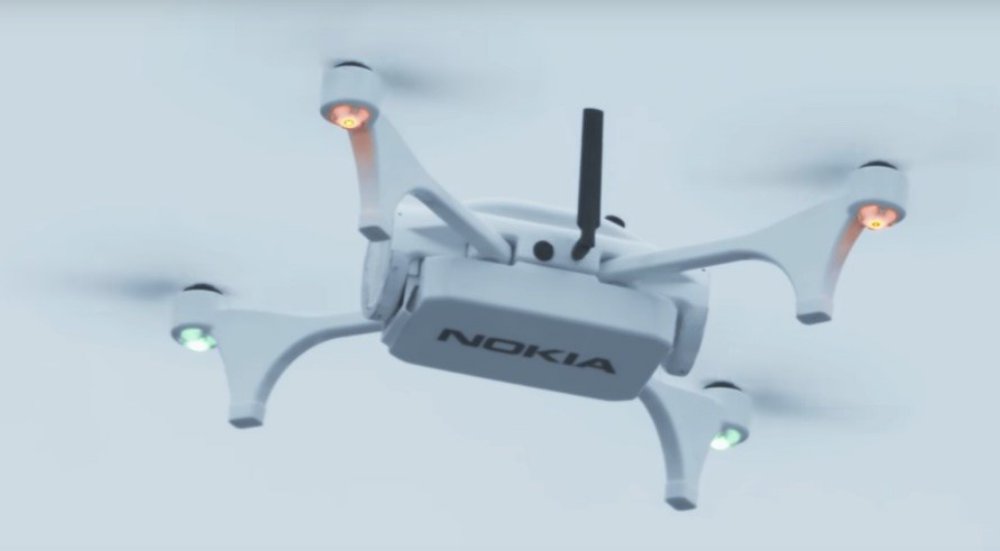Nokia is actively working alongside a university in Sydney on brainstorming use-cases for drones in the agriculture and public safety sectors, as well as establishing a reliable drone network for Australian airspace.
“We discussed with the university we need to put the framework in place, we would like to work with different entities here,” Nokia head of IoT Market Solutions Mohamed Abdelrehim told ZDNet.
“The idea is to … [demonstrate] what we’ve been doing in Finland, and experience sharing from the other markets like in Africa, Europe, North America, and try to bring it here to Australia to see how we can accelerate the ecosystem of the innovation via Internet of Things and the drones.”
According to Nokia, it has the technology, while universities have the “fresh ideas” and governments can contribute use cases they would like to see addressed.
While Nokia would not say which university is involved in the discussions, it does have a pre-existing relationship and tech lab at the University of Technology Sydney.
According to Abdelrehim, Nokia’s drone journey got its boost upon receiving a $1 million grant from the Dubai government after showcasing the use of drones in natural disasters.
“The idea was Nokia saving lives,” he told ZDNet.
“We were able to demonstrate a use case which was quite interesting for public safety that you have a disaster and recovery situation, say an earthquake or a flood, and you are looking for people. So what happens is based on our solutions, we are able to put all the software of the network in a backpack. And this backpack has the full LTE network and you’re having the drones flying beside the rescue operator, like an escort to them. And then they are able to go to areas which people are not able to step in.
“That was the key milestone in drones for Nokia.”
The safety demonstration followed Nokia’s original showcase to the Dubai government two and half years ago of using drones for networking optimisation and planning rather than sending resources and people to distant areas, Abdelrehim said.
The New Year’s Eve fire in a Dubai hotel at the end of 2015 also helped serve as a “key trigger” to have LTE networks “exceed expectations for security”, he said, with the Dubai government’s security networks provider Nedaa (Arabic for “call for help”) meaning mission-critical agencies get their own spectrum and network.
This led the networking giant to the idea of using LTE-enabled drones rather than Wi-Fi-reliant UAVs, Abdelrehim explained, which will allow for mass amounts of drones to be controlled autonomously from the network.
For emergencies and natural disasters now, Nokia has enabled a full LTE base station to be put on the back of a car or even in a backpack, providing a small, private 4G network to a radius of up to 5km square providing coverage for the drones.
“The drone is providing the high-definition camera and the sensors connected via the LTE,” he explained, adding that small cells could even be installed on the drones themselves in future when they are able to bear that weight.
Disaster use cases include missing persons search using thermal cameras across a swarm of drones, along with the delivery of first aid kits and mapping and route guidance for search and rescue teams. Fires could additionally be prevented by drones monitoring dry areas, which could also detect and extinguish them.
Currently, Nokia is able to run 10 drones in parallel control via 4G, and is adding further artificial intelligence capabilities to this.
“This is an enhancement, because we have the intelligence between a drone and the edge of the network, which is the core, the back end of the network, and we are putting in an artificial intelligence layer on top … because we have different kinds of solutions for different kinds of use cases,” he said.
The networking giant currently has two types of drones: An electric drone with one hour of coverage and a half-kilogram payload; and a hybrid drone with five hours of coverage and a 5kg payload.
ZDNet also understands that Nokia is believed to be in advanced development of a drones-as-a-service solution.
“Today, we have six to nine drones which are being tested,” he said.
Nokia has also begun segmenting the areas in which the drones are used, starting with safety, security, smart cities, and industrial applications.
Safety applications include using drones to monitor traffic, speeding cars, and crowd behaviour; industrial applications include scanning critical areas like nuclear reactors to find cracks and radiation leakage with cameras and sensors; and smart cities applications include monitoring air pollution, providing meteorological measurements, last-mile parcel delivery, determining water quality via checking water colour for pollution, event management, site surveys, and inspection of public buildings.
In Australia, Nokia is particularly eyeing the agriculture sector, saying that using drones to complement Internet of Things (IoT) solutions will enhance and create more jobs.
Drones could be used across crop farming and harvesting, transport to processing, processing machinery, and transport to customer, according to Nokia.
Cattle management by checking their vitals via behaviour analysis and core temperature could also be used, while drones could additionally conduct irrigation and pesticide spraying, Abdelrehim suggested.
“[We are] working with the universities and the community here, then we are able to build a go-to-market model for here,” he announced.
“I believe Australia has the biggest focus; if you are able to adopt that quickly, you will be one of the biggest countries who’s really driving drones with Internet of Things. You have huge potential compared to other countries.”
Source: ZDNet

